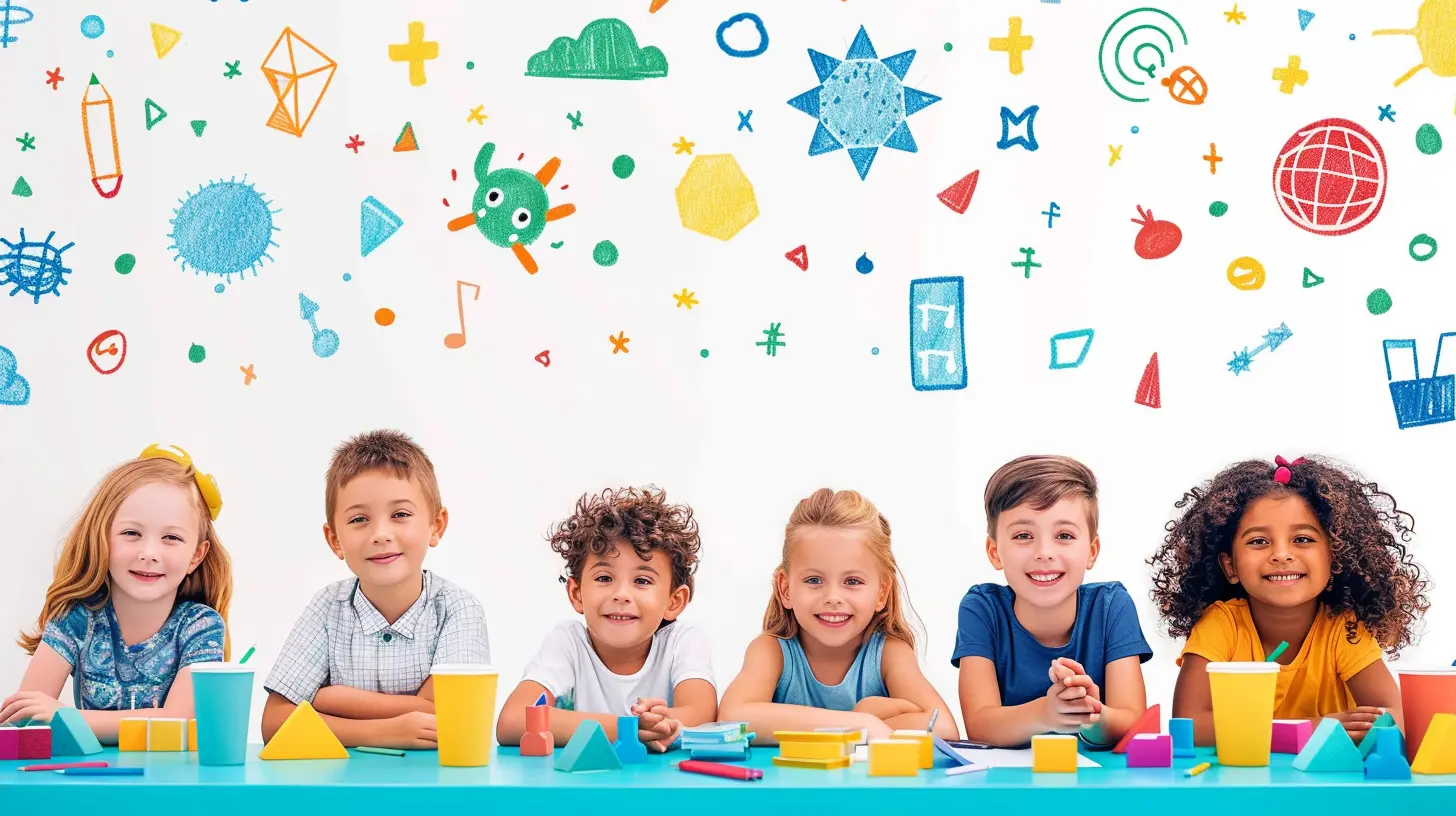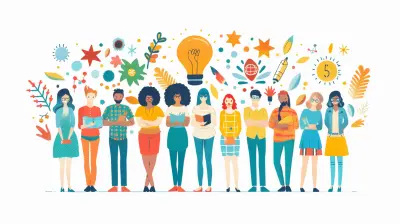How to Create a Positive Learning Environment for Gifted Students
28 October 2025
Every student deserves a space where they feel understood, challenged, and excited to learn. But when it comes to gifted students, the stakes are a little higher. These bright minds often think, feel, and process information differently—and if their environment doesn’t support that, they can easily become bored, frustrated, or even isolated.
So, how do we create a positive learning environment for these exceptional learners?
Let’s dive into what makes a gifted student thrive, how to nurture their potential, and how to build a space where their brilliance isn’t just recognized—but celebrated.
What Makes Gifted Students Different?
Gifted students aren’t just “smart kids.” They often have a unique mix of characteristics—lightning-fast learning, deep curiosity, intense emotions, perfectionism, and creative thinking that doesn’t always fit into the typical classroom mold.Have you ever met a 10-year-old who could explain quantum physics and quote Shakespeare in the same breath? That’s the kind of learner we’re talking about.
These students need more than just tougher math problems or more reading assignments. They need emotional support, flexibility, and encouragement to explore beyond the textbook.
Why Environment Matters More Than You Think
Let’s face it, nobody thrives in a dull, rigid, one-size-fits-all classroom. But for gifted students, the wrong environment can be a deal-breaker. Imagine trying to run a marathon wearing shoes two sizes too small. That’s what it feels like when gifted students are forced to shrink themselves to fit the “norm.”The right environment helps them soar. It fuels their passion for learning, embraces who they are, and challenges them to grow not just academically—but personally and emotionally too.
So, how do we build that kind of environment?
1. Start by Recognizing Their Unique Needs
First things first: not all gifted students look the same. Some may excel in one subject while struggling in another. Some are quiet and introverted; others are wildly expressive and energetic.The key here? See each gifted student as an individual, not just a label.
Ask yourself:
- What excites them?
- What frustrates them?
- How do they prefer to process information?
- Are they emotionally sensitive?
- Do they crave independence?
By answering these questions, you’re already laying the foundation for a more positive and personalized learning space.
2. Foster Emotional Safety Before Academic Growth
Gifted students often feel “different”—and not always in a good way. Their peers might not understand their interests, and they might struggle with anxiety, self-doubt, or even loneliness.Creating emotional safety means giving them permission to be themselves. It means:
- Encouraging open conversations
- Normalizing mistakes and failure as part of learning
- Helping them manage stress, anxiety, and perfectionism
- Providing regular positive feedback—not just for achievement, but for effort and creativity
When students feel emotionally secure, they’ll take more risks, ask more questions, and engage more deeply in the learning process.
3. Differentiate Instruction—Yes, Seriously
Gifted students get bored easily. If they’ve already mastered the content, asking them to sit through the same material as everyone else is like making an Olympic swimmer wade in a kiddie pool.Differentiation doesn’t mean giving them more work—it means giving them different work.
Try these strategies:
- Compact the curriculum (skip what they already know)
- Offer independent study projects
- Allow them to choose topics of interest
- Integrate cross-curricular learning (combine science with art, literature with history, etc.)
- Use tiered assignments that challenge them at their level
Treat them like explorers, not robots. Let them dig deeper, analyze, debate, and question. That’s where the magic happens.
4. Encourage Curiosity and Playful Learning
If learning feels like a chore, something’s gone wrong. Gifted students are naturally curious—like mini-detectives constantly looking for clues. If you give them the space to wonder, discover, and even fail, they’ll fall in love with learning all over again.So bring in:
- Puzzles and brainteasers
- Open-ended questions
- Debates and philosophical discussions
- Interactive experiments
- Creative writing and storytelling
Let them ask the weird questions. Let them build, create, break stuff, and get messy. Remember, curiosity is the spark that lights up the path to learning.
5. Create Opportunities for Peer Interaction
Gifted students often crave connection—but may struggle to find peers who truly “get” them. That’s where peer groups come in.Organize:
- Gifted student groups
- Book clubs
- STEM clubs
- Art collectives
- Socratic seminars
These groups offer a sense of belonging, allow them to exchange ideas with like-minded peers, and help them build social-emotional skills in the process.
Just like athletes need a team to train with, gifted minds grow best when they’re surrounded by people who challenge and inspire them.
6. Celebrate Progress, Not Just Perfection
Gifted students can be their own toughest critics. Their brains often race ahead of their hands—and when things don’t go exactly as planned, they might spiral into frustration or quit altogether.That’s why it’s crucial to celebrate progress over perfection.
Say things like:
- “Your thinking here is really innovative.”
- “I can see how much effort you put into this.”
- “What a creative way to approach the problem!”
Encouraging a growth mindset helps them realize that learning is a journey—not a race to be the best. It’s okay to stumble, and it’s more than okay to take creative risks.
7. Include the Family in the Journey
Parents of gifted kids can be great allies—or feel completely lost. They’re often the first to notice their child’s unique abilities, but they may struggle with how to support them.Teachers and schools can build bridges by:
- Keeping communication open
- Offering resources and tools
- Hosting parent workshops on giftedness
- Sharing progress regularly—both academic and emotional
When educators and families work hand in hand, gifted students get the consistent support they need at home and in school. It’s a win-win.
8. Advocate for Flexibility in School Systems
Here’s the honest truth: school systems aren’t always built for outliers. But you can be the change-maker.Push for:
- Subject acceleration
- Grade skipping (when appropriate)
- Individual learning plans
- Flexible seating and schedules
- Access to gifted programs and mentors
It might require a little extra effort—but the payoff is huge: empowered students who are finally learning at their true level, not being held back by red tape.
Be the voice that says, “We can do better for these kids.” Because we can—and we must.
9. Teach Emotional Intelligence, Too
Giftedness often comes hand-in-hand with heightened emotional sensitivity. That means gifted students might experience emotions more deeply—and struggle more with things like rejection, criticism, or failure.Don’t shy away from SEL (Social Emotional Learning). Teach them:
- How to manage stress
- How to build resilience
- How to express themselves in healthy ways
- How to deal with both success and failure
This doesn’t just help them as students—it helps them as human beings.
Let them know: Their feelings are valid. Their voice matters. And they’re not alone in this.
10. Be Their Mentor, Not Just Their Teacher
Lastly, gifted students need mentors—someone who sees them, gets them, and believes in them. You don’t have to be a genius yourself. Just be curious, compassionate, and open-minded.Ask them about their dreams. Challenge them to stretch. Encourage them when they fall. Celebrate when they rise.
Being a mentor means walking beside them, not in front of them. And that kind of guidance? It’s priceless.
Final Thoughts: The Environment Shapes the Mind
Creating a positive learning environment for gifted students isn’t just about boosting grades or avoiding boredom. It’s about helping young minds feel safe, seen, and supported so they can truly flourish.When we give these students the right tools, space, and encouragement—they don’t just succeed. They thrive. They light up rooms. They challenge norms. They build, innovate, and dream big.
And isn’t that the kind of future we all want to be a part of?
So let’s start now. Let’s build environments where brilliance is not just acknowledged—but uplifted.
all images in this post were generated using AI tools
Category:
Gifted EducationAuthor:

Zoe McKay
Discussion
rate this article
1 comments
Xylo Green
Foster collaboration, encourage curiosity, and provide personalized challenges for gifted learners.
November 6, 2025 at 11:41 AM

Zoe McKay
Thank you for your insights! Collaboration, curiosity, and personalized challenges are indeed key components in fostering a positive learning environment for gifted students.


